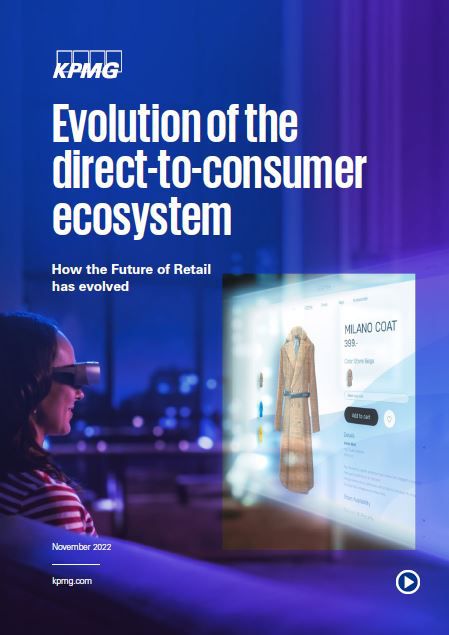If you are like most consumers, the way you shop has changed dramatically over the past two years. The introduction of lockdowns changed shopping patterns overnight.
Physical stores have now reopened and rising foot traffic suggests they remain an important part of the retail channel mix. But it’s the ecommerce channels that have driven the revolution. Global retail ecommerce grew by 26 percent in 2020 and 16 percent in 2021 (topping US$5 trillion). Estimates suggest it neared US$5.5 trillion in 2022. The astounding growth in 2020 was majorly driven by direct to-consumer (D2C) ecommerce channels, which reported growth of 45 percent in 2020.
As we suggested in our Future of Retail report, we are currently experiencing an evolution of retail towards ‘consumer commerce’ where, increasingly, consumer-facing businesses offer products and services without the need for a physical store legacy. Just consider, for example, how the so-called Metaverse might change the dynamics (and valuations) in existing retail markets.
The rapid expansion of D2C is, therefore, no surprise. For manufacturers, D2C offers a way to engage directly with more consumers, increase sales, improve speed to market and capture greater customer data. For consumers, D2C is seen as providing greater convenience, more personalization, more efficient returns processes and increased value.
The opportunities are tremendous. In this report, KPMG Deal Advisory professionals explore those opportunities, identify the risks and shine a spotlight on the emerging business models in today’s D2C marketplace. We then look at some of the inorganic approaches — mergers and acquisitions in particular — that retailers are using to deliver on their D2C strategies. And we offer some insights on how the leading retailers are making their inorganic D2C strategies successful and sustainable.
Key takeaways
1. D2C channels are driving the next wave of growth for many Consumer and Retail companies.
2. Successful D2C requires a smart, holistic strategy that builds scale and delivers on customer expectations.
3. Many companies are looking at inorganic approaches to build scale — platforms, M&A and partnerships, for example.
4. Finding the right platform, target or partner can ensure massive competitive advantage.
5. This report helps you know the evolution of direct-to-consumer, what to look for, and how to assess potential targets..
Continue reading
Contact us
Connect with us
- Find office locations kpmg.findOfficeLocations
- kpmg.emailUs
- Social media @ KPMG kpmg.socialMedia
Stay up to date with what matters to you
Gain access to personalized content based on your interests by signing up today





